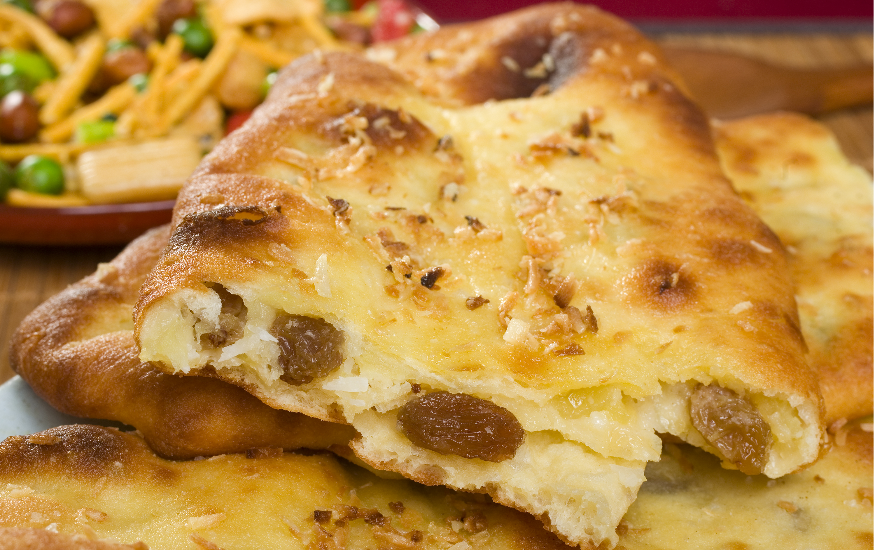Nan or Naan bread is now an integral part of Indian cuisine, perfect for mopping up the delicious leftover sauce. But where did the unique flatbread come from?

Thought to be named after the Persian word for bread, nan breads can be leavened or unleavened and are often flavoured with herbs and spices such as coriander and chilli. They are usually brushed with butter or ghee and served hot as an accompaniment to curries and other Indian cuisines.
Food for Kings
Although it is believed that the dish could have been a staple in India centuries earlier, the first recorded mention of nan bread is around 1300 AD from Amir Kashrau (1253-1325 AD). Amir Kashrau was an Indo-Persian poet, scholar, and musician who lived in Delhi and who wrote of nan bread being cooked in the Imperial Court there. Later records suggest that in the sixteenth century it was cooked in the royal kitchens of the Mughal Emperors, who ate the bread as part of their breakfast along with keema or kebab.
Due to the specialised way nan bread is cooked and the rarity of the ingredients during the sixteenth and seventeenth centuries, nan bread is likely to have remained a delicacy only eaten by the upper classes of Indian society throughout this time. The bread is traditionally cooked in a tandoor, a large clay oven shaped like an urn that has been used in Asian cooking for thousands of years. The tandoor gives the nan bread its distinct charred sections and crispy edges.
Although it is believed that the dish could have been a staple in India centuries earlier, the first recorded mention of nan bread is around 1300 AD from Amir Kashrau (1253-1325 AD)

Global renown
In the eighteenth-century nan bread begins to be mentioned throughout all classes of Indian society, as it became a staple for everyone regardless of their class. Towards the end of the eighteenth and the beginning of the nineteenth century, the Western world was introduced to nan bread when it was mentioned in the travel journals of an English historian and clergyman, William Tooke – the first time the name appears in English.
Indian restaurants were opened in England as early as 1810 when Sake Dean Mahomed opened Hindoostande Diner after retiring from the British East India Company. The popularity of Indian dishes such as nan bread has grown steadily in the two hundred years since.
Standing the test of time
Although delicious in its own right, the milder flavour of the bread is the perfect companion to other stronger-flavoured dishes. Nan bread is not made to be sliced or cut, it is best torn by hand and used to soak up curries and sauces. At Sachins we serve plain nan alongside nan breads flavoured with aromatics such as garlic, chilli and coriander. We also serve stuffed nan bread, with variations such as Peshawari Nan, stuffed with fruit and nuts, and Keema Nan, stuffed with minced lamb and coriander.
Book a table today and try the food of kings for yourself.
